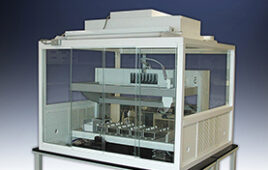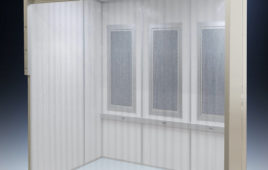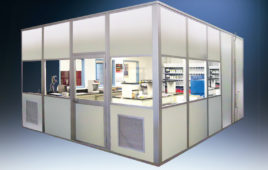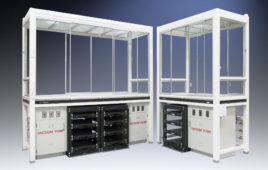In the context of engineering or chemistry, we tend to think of contamination as a static, constant problem which can be resolved by filtration or dilution. Take the contaminate to a de minimis level, and the problem is gone. However, as explained in last month’s column, bacterial and fungal contamination present more complex contamination problems; and the consequences more insidious. Biologists are geared toward the possibility of significant bacterial and fungal contamination developing from a single spore (like a seed) and creating a situation that is catastrophic to the process and the product. In general, viable contamination is a negative force.
There are exceptions, however. Even in industrial processes, bacteria can occasionally be a positive force. For example, bacteria are beneficially used in some aqueous cleaning systems for in-situ or on-board bioremediation of oils. Such processes support hazardous waste minimization.
In bacterial and mold contamination, there are always balances as well as economic and safety/environmental related trade-offs. Changes in building and coating materials, while important for economic and health considerations, are more supportive of biological growth. (Consider the decreasing use of plaster relative to that of dry wall. While less costly, dry wall — basically paper — is more supportive of biological growth.)
In addition, steps taken to protect public health can potentially promote the growth of interfering biological organisms. Certain inorganic compounds, notably lead, copper, and cadmium, are relatively non-supportive of life because they interfere with enzymes (organic catalysts that operate within the organism). Because of this, they are hazardous to people. In the interests of worker and community safety, lead pipes and lead-based paints have been replaced. The replacements, while less hazardous to people, are more supportive of bio-growth. Specifically, lead free paint has can support mold. Similarly, cyanide-free plating processes are promoted to protect workers and to minimize hazardous wastes. Some cyanide–free plating processes, however, are reported to have increased problems with growth. An increased potential for increased contamination by molds and fungi may be an inevitable outgrowth of environmentally-preferred processes.
Potential consequences of bacterial and fungal growth include compromises in structural integrity and contamination of product with viable life forms. Contamination by secondary, non-viable products such as secretions or non-viable remains is a potential problem. Bacteria secrete a cement-like material to allow attachment to surfaces. Molds may send filaments which also release secretions into pores of the substrate. For example, Stacchybortyrus mold produces a slimy, gooey muco-polysaccharide, which may interfere with functionality. This contamination is not readily removed with common organic solvents such as perchloroethylene. Water-based approaches to decontamination are more likely to succeed.
Coolant may deposit fungus or perhaps spores on a part. If the part is then cleaned in a biodegradable cleaning fluid, the contamination is then transferred. Given suitable growth conditions, the level of contamination can increase. Even with inihibitors, and at high pH, the potential for eventual multiplication exists. Even resistant additive packages can break down; in fact, one early warning sign of living contamination is extreme, atypical pH fluctuation.
Contamination control of viable contaminates is, not unexpectedly, fairly process-specific. One approach is to adopt conditions where spores are not viable. For example, growth is not likely to occur in classic industrial chlorinated solvents. In aqueous processes, temperatures of 140° F are sufficient to kill most spores, although a few will survive 160 to 180° F. In small-scale aqueous processes that operate at 110° F, there could be a problem.
Thanks to Jim Unmack of Unmack Corporation, Rancho Palos Verdes, CA. Jim is a Certified Industrial Hygienist and a Certified Safety Professional with more than 30 years experience in protecting workers’ health and safety through the application of good science to the work environment. He can be reached at 310-422-4340; [email protected] .




